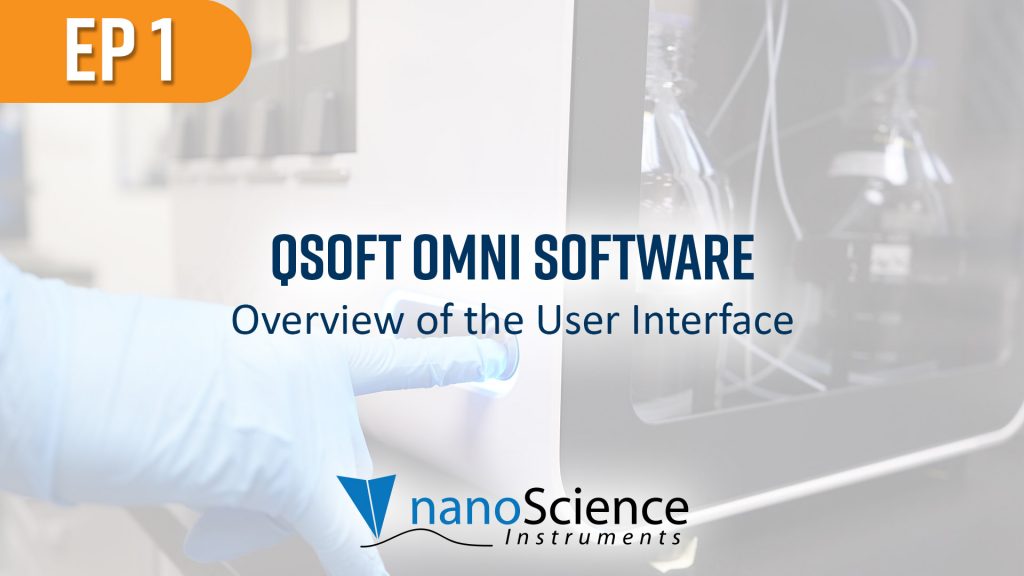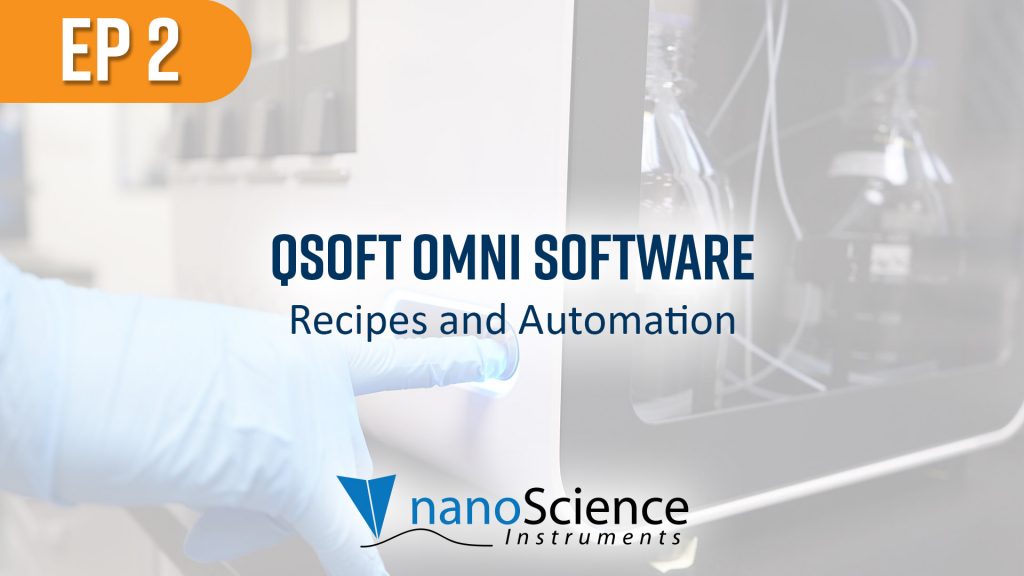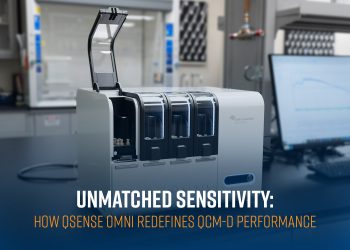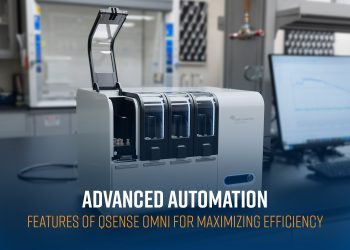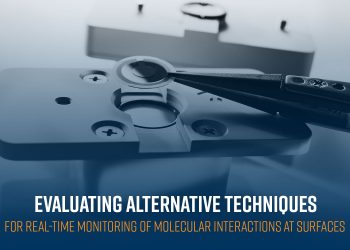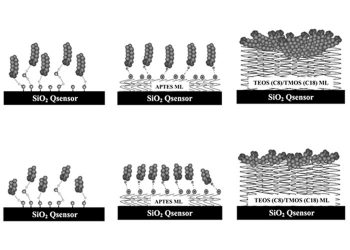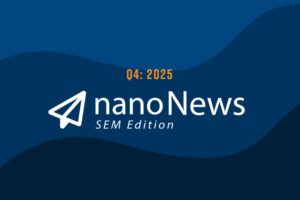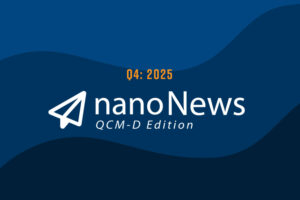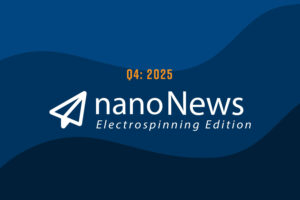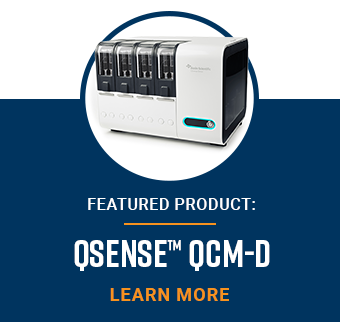

Welcome to the Quartz Crystal Microbalance with Dissipation monitoring (QCM-D) edition of the Nanoscience Instruments newsletter, nanoNews. We are excited to share the latest updates from around the QCM-D community with you!
In this second quarter newsletter you will find recent webinars, blogs, and publications that highlight several use cases of QSense QCM-D across a variety of industries and research applications.
If you are interested in more regular updates about QSense QCM-D news, we invite you to follow us on LinkedIn as well!

Contract R&D
Want to know what’s happening on your surface?
Find out if QCM-D is Right for you!
Nanoscience Analytical has a wide range of QCM-D instruments and a fully-equipped lab for contract surface science projects. We encourage you to contact our team of research scientists to discuss your application and determine the best path forward. Build your model system with over 100 sample surfaces and gain a better understanding of the molecular interactions taking place.

NEWS & UPDATES
QSoft Omni Software Overview:
In these new videos on our YouTube channel, we introduce you to the QSoft Omni software and showcase its recipe builder—a user-friendly interface that brings flexible automation to your lab workflows. Whether you’re developing pharmaceuticals or performing fundamental studies on thin films, QSoft Omni helps to enable efficient experimentation with less manual interaction.

CUSTOMER SHOWCASE
Stony Brook University
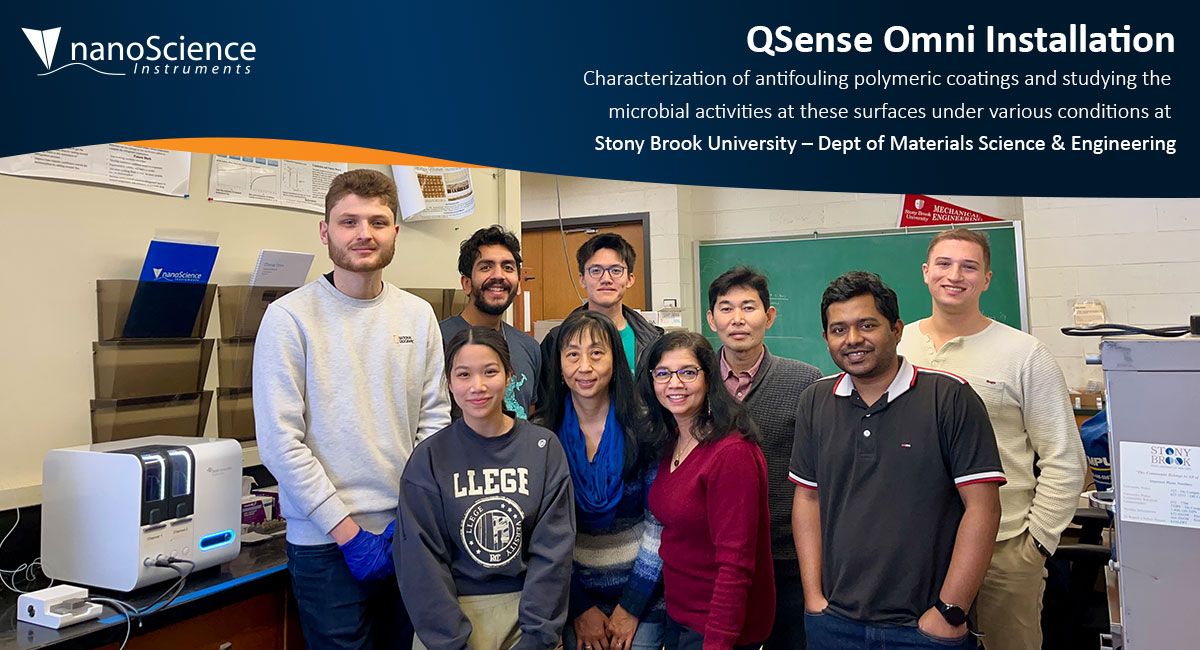
Congratulations to Dr. Maya Endoh on the addition of a new state-of-the-art QSense Omni Quartz Crystal Microbalance with Dissipation monitoring (QCM-D) instrument in her lab at Stony Brook University! This system will enhance the group’s ability to characterize antifouling polymeric coatings and study microbial activity at these surfaces under different conditions.
University of British Columbia
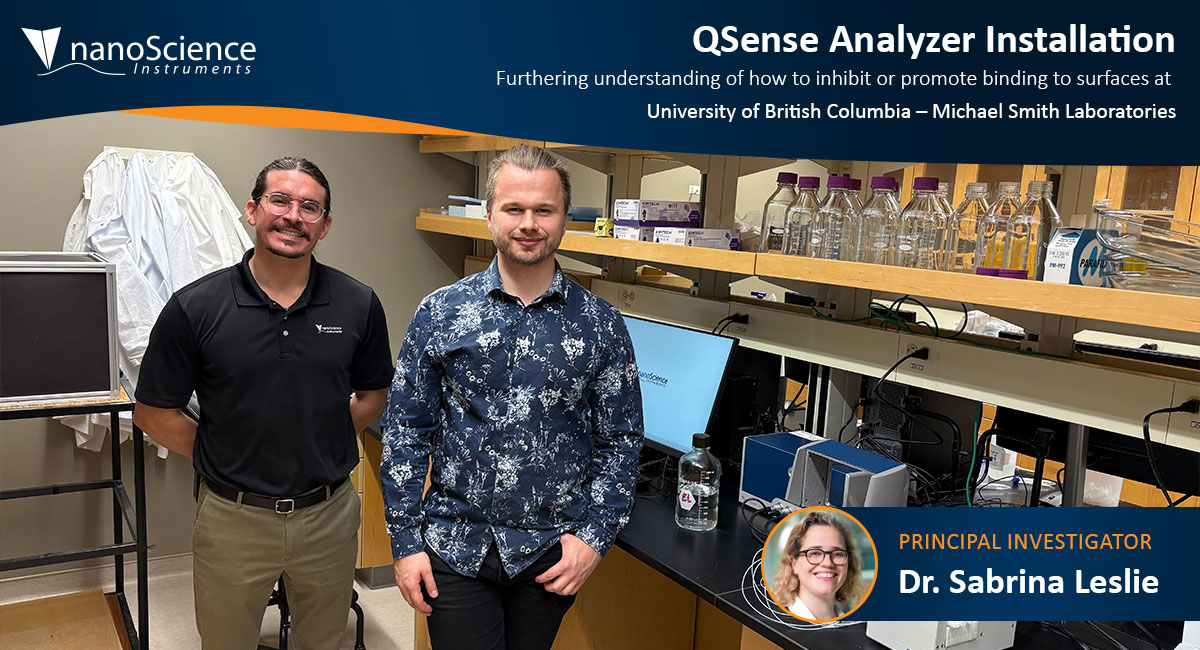
Congratulations to Dr. Sabrina Leslie and her research group at the University of British Columbia on the acquisition of a QSense Analyzer 4-channel QCM-D system. The group plans to use their Analyzer to better understand how to inhibit and promote binding to surfaces, furthering their research in drug delivery applications.


BLOGS
Unmatched Sensitivity: How QSense Omni Redefines QCM-D Performance
Interactions at surfaces and interfaces are crucial in many fields, including environmental science, biopharmaceutical research, materials science, catalysis, and nanotechnology. The ability to detect minute changes in mass, viscoelastic properties, …
Advanced Automation Features of QSense Omni for Maximizing Efficiency
Quartz Crystal Microbalance with Dissipation monitoring (QCM-D) has revolutionized surface science by enabling real-time analysis of molecular interactions. However, traditional QCM-D workflows often involve time-consuming manual processes that introduce variability …
Evaluating Alternative Techniques for Real-Time Monitoring of Molecular Interactions at Surfaces
Understanding molecular interactions at surfaces is essential for advancing fields such as biosensing, materials science, and drug discovery. These interactions—ranging from protein-ligand binding to polymer adsorption—can reveal crucial information about …

WEBINARS
Upcoming Webinars:
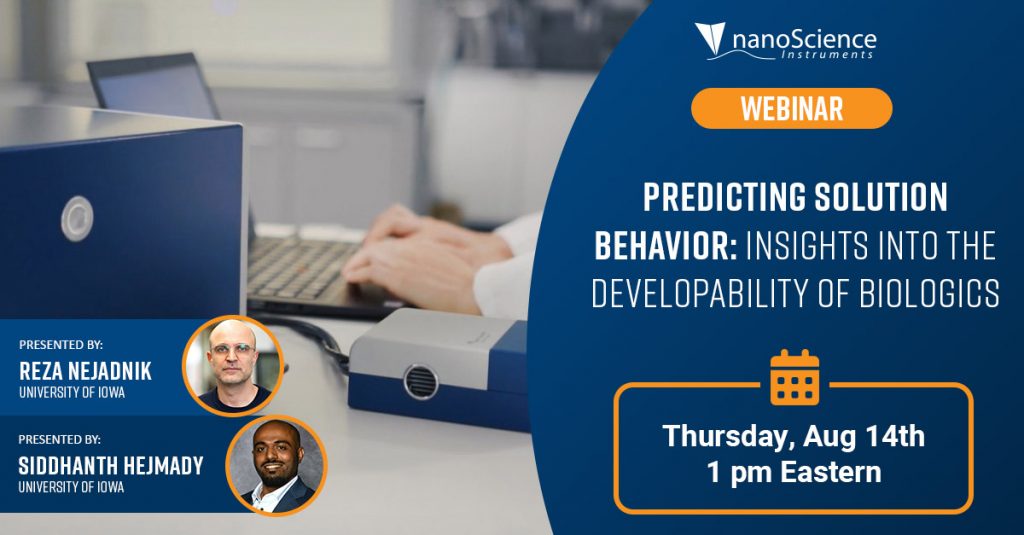
This webinar will go through how QCM-D can effectively measure self-association through LBL and predict solution behavior in mAbs. The method offers an alternative to kD-DLS, making it a valuable tool for developability assessments in therapeutic protein formulations.
ON DEMAND Webinars:
Molecular Scale Adsorption Behavior of Per- and Poly-Fluoroalkyl Substances (PFAS) on Model Surfaces
Per- and poly-fluoroalkyl substances (PFAS) are emerging contaminants of concern owing to their longevity, toxicity, mobility, and bioaccumulation. Alternative products, and chemistries, have failed to replace PFAS due to its …
Using QSense QCM-D to Assess & Optimize Cleaning Efficiency
Analyze cleaning process dynamics, surface etching, and surface residual! In this webinar you will learn about QSense QCM-D technology, a powerful tool for analyzing detergent activity and cleaning dynamics at …

CONFERENCE CORNER
ACS Fall 2025 | August 18-20, 2025 | Washington, DC
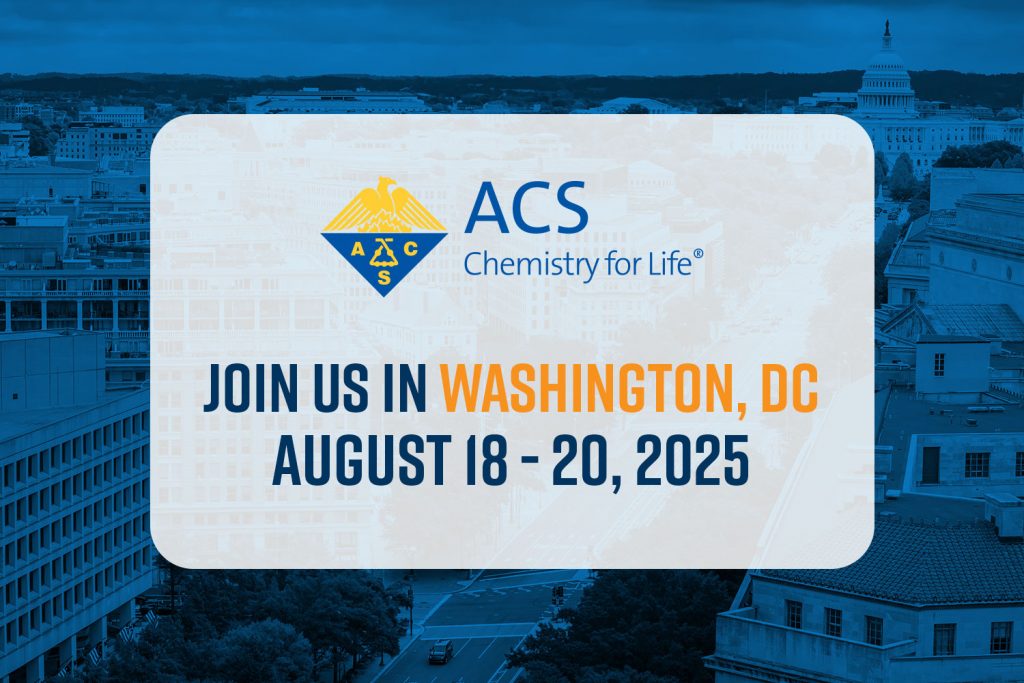
Meet us in Booth #2719 at the American Chemical Society’s Fall Meeting! Stop by for a live electrospinning demo with the Fluidnatek LE-50 G2, our compact and powerful benchtop unit. We will also have a QSense Omni and an Attension Theta Flow for hands-on exploration of the instruments and their powerful software!

RECENT QSENSE PUBLICATIONS
Discover recently published journal articles from our QSense Customers!
- Rapid isolation and recovery of Salmonella using hollow glass microspheres coated with multilayered nanofilms | https://doi.org/10.1016/j.mtbio.2025.101472
- Assessing subvisible particle risks in monoclonal antibodies: insights from quartz crystal microbalance with dissipation, machine learning, and in silico analysis | https://doi.org/10.1080/19420862.2025.2501629
- Delineating Confinement Regimes for Nafion Thin Films via Simultaneous QCM-D and Spectroscopic Ellipsometry | https://doi.org/10.1021/acs.macromol.5c00424
- Deciphering Mechanochemical Influences of Emergent Actomyosin Crosstalk Using QCM-D | https://doi.org/10.1007/s12195-024-00835-w
- Self-assembly of short biopeptides onto skin tissue components studied using QCM-D | https://doi.org/10.1111/ics.13044
- Nonfouling Coatings from Synthetic Intrinsically Disordered Proteins | https://doi.org/10.1002/smll.202504365
- Gold Nanoparticle Adsorption in Covalently Bonded Weak Polyelectrolyte Brushes | https://doi.org/10.1021/acs.macromol.4c02332
If you are a QSense user and would like your paper to be featured in a future newsletter, please send us a link to the publication via email: marketing@nanoscience.com.

APPLICATION SUPPORT
Need help with DFind? Join Us for a FREE Online Training on August 11th at 2PM Eastern
We are excited to offer a virtual 1-hour session focused on QSense data analysis using the Dfind software. This training will provide participants with hands-on guidance on how to analyze, interpret, and present QSense data effectively.
Real datasets will be used during the session. If you would like your data to be considered for analysis during the training, please send it to ajaiswal@nanoscience.com We’ll do our best to include your dataset in the live session.
We look forward to your participation!
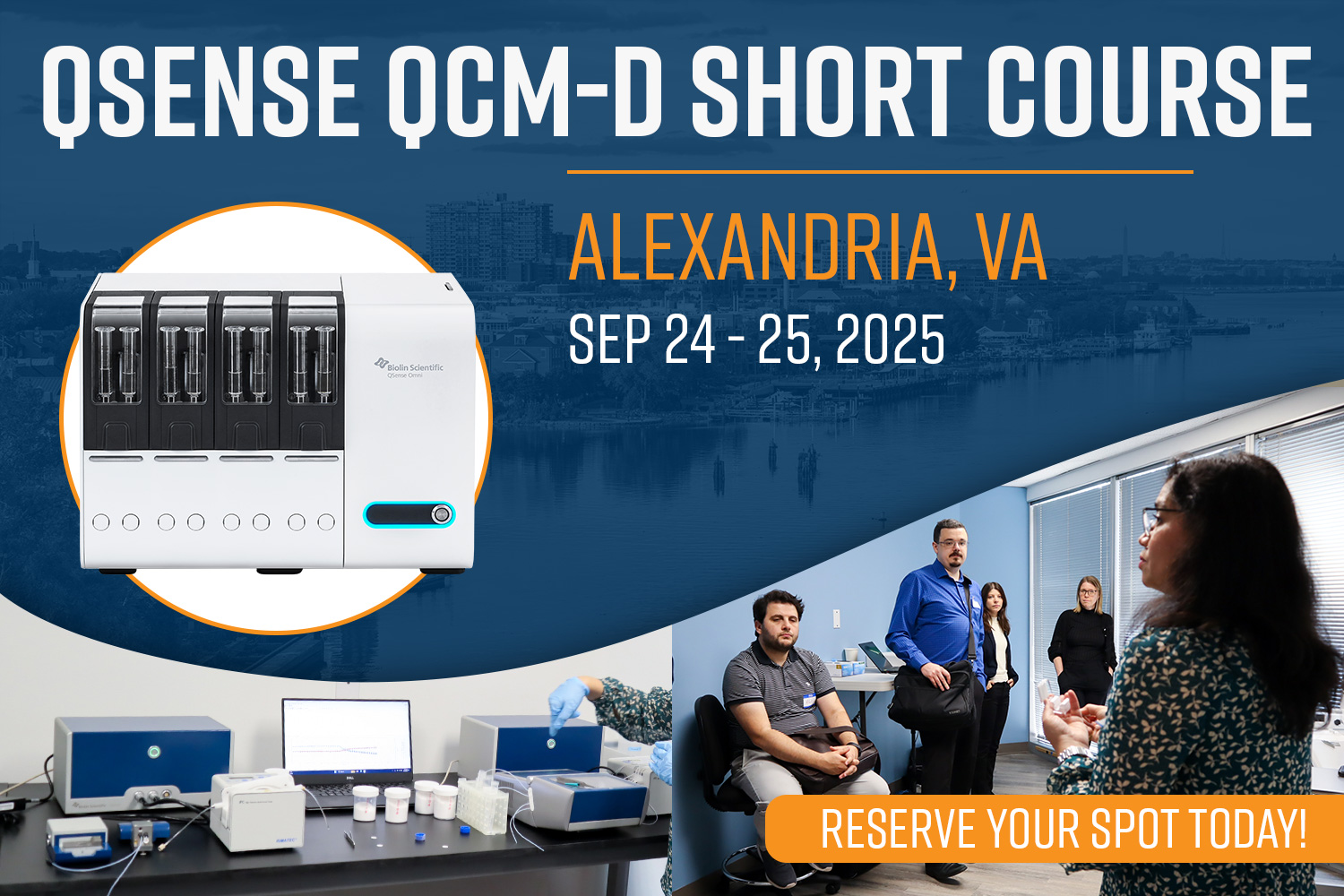
QCM-D Short Course
We are excited to announce that we are hosting a comprehensive, 2-day QCM-D training course at our lab in Alexandria, Virginia this September!
This course is designed for both new and experienced users of QSense instruments looking to improve their experimental design, instrument handling, and data interpretation skills. Led by our team of QCM-D experts, the program blends lectures, live demonstrations, and guided hands-on lab sessions.
Seats are limited to ensure direct access to instructors and hands-on time with the instruments, and spots are reserved on a first-come-first-served basis.

